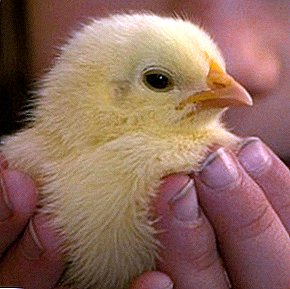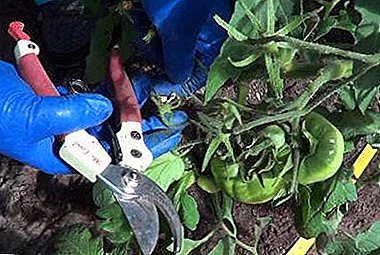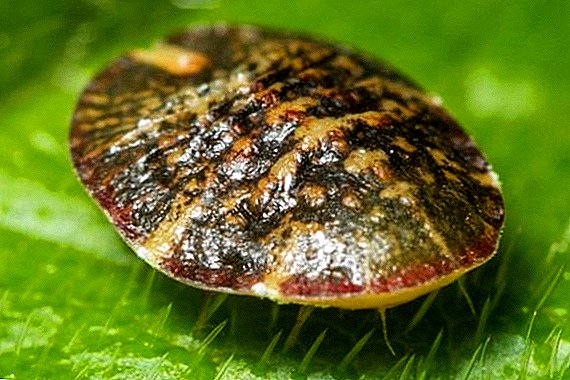 Rabbits are animals with low immunity. This feature appeared as a side effect of breeding and changes in habitat conditions. This makes the rabbit heads learn about all the major diseases of pets and be able to provide them with first aid. The reasons for the appearance of blood from the nose, ears or anus can be many factors - heat stroke, infectious diseases, the presence of parasites. Since different diseases have the same symptoms, it is necessary to be able to distinguish them by additional features.
Rabbits are animals with low immunity. This feature appeared as a side effect of breeding and changes in habitat conditions. This makes the rabbit heads learn about all the major diseases of pets and be able to provide them with first aid. The reasons for the appearance of blood from the nose, ears or anus can be many factors - heat stroke, infectious diseases, the presence of parasites. Since different diseases have the same symptoms, it is necessary to be able to distinguish them by additional features.
Why does rabbit have blood
The appearance of blood is the result of damage to the body by viruses, parasites or inflammatory processes and injuries. In order to accurately diagnose the condition, it is necessary to examine the animal, identify additional signs of the disease, report them to the doctor for diagnosis and begin treatment.
Did you know? In the world there are more than 200 breeds of rabbits - from the smallest weighing up to 500 g to large - weighing up to 12 kg. For economic purposes, use no more than 30%, the other breeds are decorative type.
From the anus
In the case of the appearance of blood from the anus, the rabbit should be given a hemostatic agent, for example, "Borogluconate calcium 20%." It is injected subcutaneously at a dosage of 0.5 ml per 1 kg of animal weight. After the introduction of the hemostat, the animal must be taken to the vet. Blood from the anus can be a sign:
- internal bleeding;
- the presence of worms;
- ulcerative or inflammatory processes in the gastrointestinal tract.
 Accurate diagnosis can be made on the basis of tests and ultrasound. After the examination, treatment will be prescribed.
Accurate diagnosis can be made on the basis of tests and ultrasound. After the examination, treatment will be prescribed.From the nose
There are many blood vessels in the rabbit's nose, so the most common cause of the appearance of blood from the nose is heat stroke. To prevent the problem, the cells with pets should be out of direct sunlight.
Find out why a rabbit has watery eyes, hair falls out and hind legs are taken away.
Symptoms of heat stroke:
- the animal lies motionless;
- ears hot to the touch;
- body temperature is elevated;
- shortness of breath;
- disturbed coordination of movements;
- the rabbit does not eat;
- blood is present in both the nasal and oral cavity.
 Treatment:
Treatment:- carry the pet to a shaded place;
- put wet cool compress on ears and neck area;
- enter subcutaneously with 1 ml of "Gamavita" to increase the body's natural resistance to stress factors;
- subcutaneously inject "Sulfocamphocain" in the calculation of 0.5 mg per 1 kg of live weight 2 times a day for 2-3 days to stimulate the work of the heart muscle.
Important! If formolvaccine is introduced to a rabbit, in whose body there is a virus, then such an animal will die within 2-3 days.
Symptoms of VGBK:
- refusal of food;
- lethargy;
- cramps with drooping heads;
- bloody nasal discharge.

Out of ears
The most common pathology is ear plugs. To get rid of them, the rabbit can comb the ear to blood. The reason why an animal begins to scratch its ears may be ear mites, which appear as a result of contact with an infected animal.
Symptoms:
- sore ears;
- the rabbit tries to scratch his ears all the time;
- skin rashes in the ears, skin irritation, wounds.
Treatment:
- soak the crusts in the ears with a mixture of iodine with glycerin (in a ratio of 1: 4) and clean the ear canal;
- if necessary, repeat the procedure until the ear is completely clean;
- in the ears to drip "Amitrazin" (2-3 drops in each).

In pregnant rabbit blood: causes
In pregnant first-year rabbit, blood from the anus may appear before the onset of labor (one week before birth) and can pass on its own. For already giving birth rabbit such a phenomenon indicates the pathologies of the birth canal and complicated childbirth. In this case, consult a veterinarian.
Did you know? Water rabbits live in the south of the USA. These animals swim well and can escape from enemies by sinking under the water, leaving only the nose for breathing on the surface.
Before finding out the exact cause of the bleeding, the animal should be given a hemostatic agent. In case of complicated labor, the animal may need intramuscular injection of 0.5% oxytocin (1 ml per 1 individual) to stimulate the labor. Rabbit also needs enhanced drinking and fortified food. If the female's body suffers from dehydration, then she can eat the newborn. 
Why blood in urine
Red colored urine may contain blood or be pigmented by some components of the diet:
- branches of fruit trees (apple, plum);
- needles;
- root crops (beets, carrots);
- drugs (antibiotics).
- dehydration;
- stress;
- kidney disease;
- internal bleeding;
- polyps in the gastrointestinal tract;
- blockage of the urinary tract.
Important! For prevention, rabbits are injected subcutaneously. "Ivermectin" at the rate of 0.05 ml per 1 kg of body weight. This is the main antiparasitic drug that affects all types of parasites.
Since it is often impossible to prevent the appearance of pathologies that result in blood from the nose, ears or internal organs, there must be hemostatic drugs, painkillers and antispasmodics in the home medicine cabinet for first aid before consulting a doctor. It is also necessary to pay attention to other signs of disease: this will help to clarify the diagnosis.












